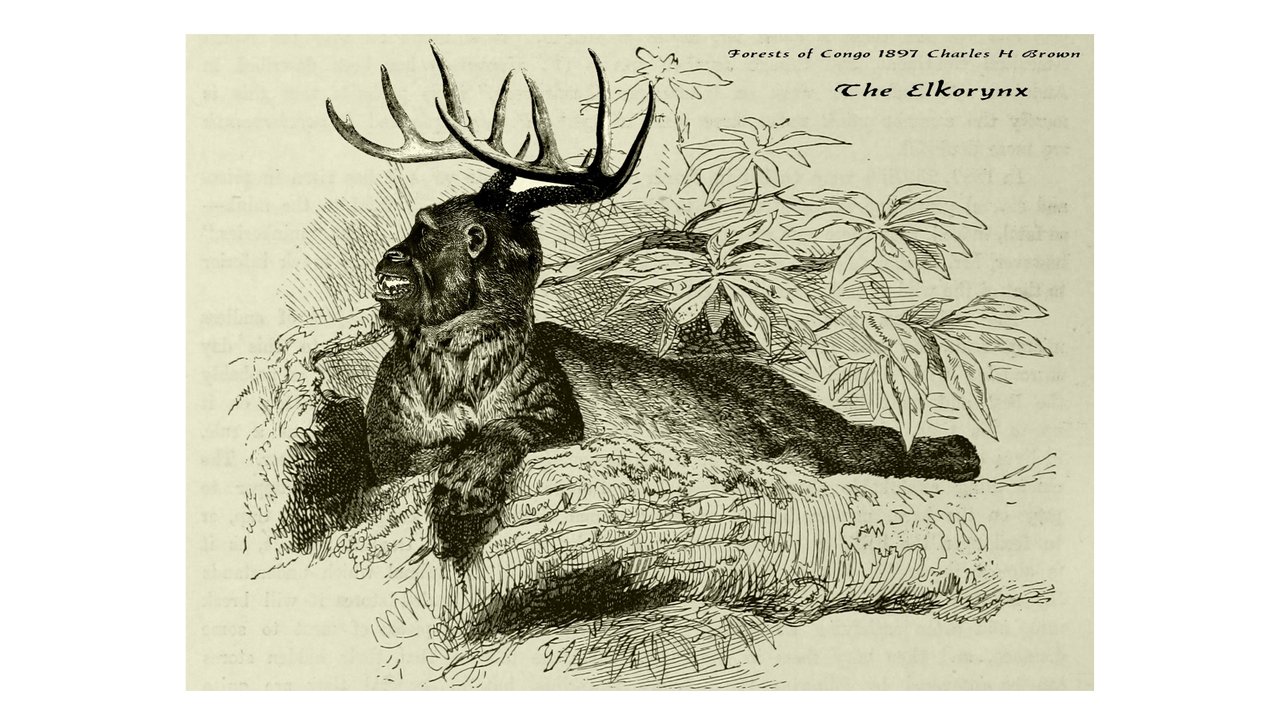African Cryptids
I came across this image in a long forgotten book at the British Library. Sighted by British explorer and zoologist Charles H Brown deep in the Congolese forests, he named the strange creature Elkorynx and this vivid illustration by the exploration's artist, Linus Lindt is the only known image of the creature. An entry from Charles' journal describes his excitement and disappointment at discovering but failing to capture the strange creature.

It was a particularly humid afternoon. Linus Lindt & I were following a rather beautiful bright blue Butterfly when we came upon this strange looking creature. We were startled at first. Neither of us had ever seen such a beast but some locals had vaguely described it to us on our way through Kinshasa. The description was so fantastic that we thought something has surely been lost in translation from Kituba, but when we saw it for the first and only time we knew what it was straight away.
Unique
It was an amazing sight to behold and I admit my heart was pounding out of my chest for fear that it would leap down and pounce upon us. It, on the other hand, (unlike most bush creatures) had no fear of humans whatsoever and turned to look at us, emitting a series of short, sharp, high pitched barks, as a warning to us not to come any closer, but otherwise remained unmoved from it's afternoon resting place on the branch of the Umbrella Tree.
It had a feline body with large paws and a distinctly ape head, aloft which sat great antlers. It was obviously a male specimen from the rather large testicles it sported and as we tentatively moved towards it, he stood up, stretched and took a great leap from the branch into the darkness of the undergrowth. I was quite amazed at how graceful it managed to carry it's large antlers. I wish I had been quick enough to somehow capture it for the London Zoological collection. It would have been an outright winner with the paying public and of great interest to the natural scientists. During our stay we laid traps for it but never saw it again, although late in the afternoon we occasionally heard it's distinctive, Baboon like call, echoing far in the distance.
The educated & keen eyed reader will know this is a fictional account for the Umbrella tree is native to Australasia not Africa ;)
